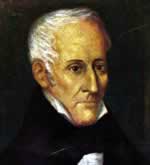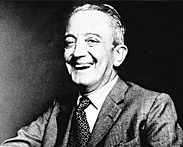|
Silvina Ocampo
Silvina Ocampo (28 July 1903 – 14 December 1993) was an Argentine short story writer, poet, and artist. Ocampo's friend and collaborator Jorge Luis Borges called Ocampo "one of the greatest poets in the Spanish language, whether on this side of the ocean or on the other." Her first book was ''Viaje olvidado'' (1937), translated as ''Forgotten Journey'' (2019), and her final piece was ''Las repeticiones'', published posthumously in 2006. Before establishing herself as a writer, Ocampo was a visual artist. She studied painting and drawing in Paris where she met, in 1920, Fernand Léger and Giorgio de Chirico, forerunners of surrealism. She received, among other awards, the Municipal Prize for Literature in 1954 and the National Poetry Prize in 1962. Personal life Ocampo was born to a wealthy family in Buenos Aires, the youngest of six daughters (Victoria, Angélica, Francisca, Rosa, Clara María, and Silvina) of Manuel Silvio Cecilio Ocampo and Ramona Aguirre Herrera. Her fam ... [...More Info...] [...Related Items...] OR: [Wikipedia] [Google] [Baidu] |
La Recoleta Cemetery
La Recoleta Cemetery ( es, Cementerio de la Recoleta) is a cemetery located in the Recoleta, Buenos Aires, Recoleta Barrios and Communes of Buenos Aires, neighbourhood of Buenos Aires, Argentina. It contains the graves of notable people, including Eva Perón, President of Argentina, presidents of Argentina, Nobel Prize winners, the founder of the Argentine Navy, and military commanders like Julio Argentino Roca. In 2011, the BBC hailed it as one of the world's best cemeteries, and in 2013, CNN listed it among the 10 most beautiful cemeteries in the world. History Franciscan Recollect monks () arrived in this area, then the outskirts of Buenos Aires, in the early eighteenth century. The cemetery is built around the Recollect Convent () and a church, Basilica of Our Lady of the Pillar, Buenos Aires, Our Lady of Pilar ('), built in 1732. The order was disbanded in 1822, and the garden of the convent was converted into the first public cemetery in Buenos Aires. Inaugurated on 17 Nov ... [...More Info...] [...Related Items...] OR: [Wikipedia] [Google] [Baidu] |
Supreme Director Of The United Provinces Of The Río De La Plata
The Supreme Director of the United Provinces of the Río de la Plata ( es, Director Supremo de las Provincias Unidas del Río de la Plata) was a title given to the executive officers of the United Provinces of the Río de la Plata according to the form of government established in 1814 by the ' (Assembly of Year XIII). The supreme director was to wield power for a term of two years. The assembly hoped to confront the royalists, who had been emboldened by internal dissension within the patriotic faction. To prevent abuses of power, the directorship would be combined with a state council of nine members and would be required to answer to a congress empowered to carry out legislation. After the resignation of José Rondeau following the unitarian defeat at the Battle of Cepeda, the office of Supreme Director was briefly assumed by Juan Pedro Aguirre. He endorsed the Buenos Aires Cabildo to name a governor for the province of Buenos Aires as the national congress dissolved itself on ... [...More Info...] [...Related Items...] OR: [Wikipedia] [Google] [Baidu] |
Short Story
A short story is a piece of prose fiction that typically can be read in one sitting and focuses on a self-contained incident or series of linked incidents, with the intent of evoking a single effect or mood. The short story is one of the oldest types of literature and has existed in the form of legends, mythic tales, folk tales, fairy tales, tall tales, fables and anecdotes in various ancient communities around the world. The modern short story developed in the early 19th century. Definition The short story is a crafted form in its own right. Short stories make use of plot, resonance, and other dynamic components as in a novel, but typically to a lesser degree. While the short story is largely distinct from the novel or novella/short novel, authors generally draw from a common pool of literary techniques. The short story is sometimes referred to as a genre. Determining what exactly defines a short story has been recurrently problematic. A classic definition of a short story ... [...More Info...] [...Related Items...] OR: [Wikipedia] [Google] [Baidu] |
La Nación (Argentina)
''La Nación'' () is an Argentine daily newspaper. As the country's leading conservative newspaper, ''La Nación''s main competitor is the more liberal '' Clarín''. It is regarded as a newspaper of record for Argentina. Its motto is: "''La Nación'' will be a tribune of doctrine." It is the second most read newspaper in print, behind ''Clarín'', and the third in digital format, behind ''Infobae'' and ''Clarín''. In addition, it has an application for Android and iOS phones. The newspaper's printing plant is in the City of Buenos Aires and its newsroom is in Vicente López, Province of Buenos Aires. The newsroom also acts as a studio for the newspaper's TV channel, LN+. Overview The paper was founded on 4 January 1870 (replacing the former publication ''Nación Argentina''), by former Argentine President Bartolomé Mitre and associates. Until 1914, the managing editor was José Luis Murature, Foreign Minister of Argentina from 1914-1916. Enjoying Latin America's largest r ... [...More Info...] [...Related Items...] OR: [Wikipedia] [Google] [Baidu] |
José Bianco
José Bianco (1908–1986) was an Argentine essayist, translator, and writer. Bianco made translations of works by Henry James, Jean-Paul Sartre, Julien Benda, and Ambrose Bierce, among others. Bianco began his career with El Límite in 1929, and later he published Little Gyaros in 1932 for which he won the Jockey Club (Buenos Aires) Award Bianco served as a secretary of Sur (magazine) for 23 years. From 1961 to 1967, he worked with Editorial Universitaria de Buenos Aires in Buenos Aires Buenos Aires ( or ; ), officially the Autonomous City of Buenos Aires ( es, link=no, Ciudad Autónoma de Buenos Aires), is the capital and primate city of Argentina. The city is located on the western shore of the Río de la Plata, on South ... References 1908 births 1986 deaths Argentine essayists Male essayists Argentine translators English–Spanish translators French–Spanish translators 20th-century translators 20th-century essayists 20th-century Argentine male ... [...More Info...] [...Related Items...] OR: [Wikipedia] [Google] [Baidu] |
María Rosa Oliver
María Rosa Oliver or María Rosa Oliver Romero (10 September 1898 – 19 April 1977) was an Argentinian short story writer, essayist, critic, translator Princeton University, retrieved 11 December 2014 and activist. She won the in 1957. Life Oliver was born in in 1898. She was the eldest of eight children from an influential family. She was descended from María de los Remedios de Escalada and she was the g ...[...More Info...] [...Related Items...] OR: [Wikipedia] [Google] [Baidu] |
Norah Borges
Leonor Fanny "Norah" Borges Acevedo (March 4, 1901 – July 20, 1998), was a visual artist and art critic, member of the Florida group, and sister of the Argentine writer Jorge Luis Borges. Early life and source of nickname She was the daughter of a lawyer, Dr. Jorge Guillermo Borges and Leonor Acevedo Suárez. Leonor was given the name Norah by her older brother, Jorge Luis Borges. Of his sister, Jorge wrote:In all of our games she was always el caudillo, I the slow, timid, submissive one. She climbed to the top of the roof, traipsed through the trees, and I followed along with more fear than enthusiasm. —Jorge Luis Borges, ''Norah'' Growing up, Norah lived in the shadow of her famous brother. It wasn't until later in life that she emerged from her brother's shadow and gained her own personal popularity. As a child, she moved with her family to Switzerland to treat the progressive blindness of her father. She studied with the classical sculptor Maurice Sarkisoff at the É ... [...More Info...] [...Related Items...] OR: [Wikipedia] [Google] [Baidu] |
Italo Calvino
Italo Calvino (, also , ;. RAI (circa 1970), retrieved 25 October 2012. 15 October 1923 – 19 September 1985) was an Italian writer and journalist. His best known works include the ''Our Ancestors'' trilogy (1952–1959), the '' Cosmicomics'' collection of short stories (1965), and the novels ''Invisible Cities'' (1972) and ''If on a winter's night a traveler'' (1979). Admired in Britain, Australia and the United States, he was the most translated contemporary Italian writer at the time of his death. Italo Calvino is buried in the garden cemetery of Castiglione della Pescaia, in Tuscany. Biography Parents Italo Calvino was born in Santiago de las Vegas, a suburb of Havana, Cuba, in 1923. His father, Mario, was a tropical agronomist and botanist who also taught agriculture and floriculture. Born 47 years earlier in Sanremo, Italy, Mario Calvino had emigrated to Mexico in 1909 where he took up an important position with the Ministry of Agriculture. In an autobiographical ... [...More Info...] [...Related Items...] OR: [Wikipedia] [Google] [Baidu] |
World Heritage Site
A World Heritage Site is a landmark or area with legal protection by an international convention administered by the United Nations Educational, Scientific and Cultural Organization (UNESCO). World Heritage Sites are designated by UNESCO for having cultural, historical, scientific or other form of significance. The sites are judged to contain " cultural and natural heritage around the world considered to be of outstanding value to humanity". To be selected, a World Heritage Site must be a somehow unique landmark which is geographically and historically identifiable and has special cultural or physical significance. For example, World Heritage Sites might be ancient ruins or historical structures, buildings, cities, deserts, forests, islands, lakes, monuments, mountains, or wilderness areas. A World Heritage Site may signify a remarkable accomplishment of humanity, and serve as evidence of our intellectual history on the planet, or it might be a place of great natural beauty. A ... [...More Info...] [...Related Items...] OR: [Wikipedia] [Google] [Baidu] |
Villa Ocampo
Villa Ocampo is the former house of Victoria Ocampo (1890–1979), one of Argentina's greatest cultural figures, founder and director of '' Sur'' magazine. The house is located in San Isidro, Buenos Aires Province. Creative guests Originally the summer house of the Ocampo family, it became Victoria Ocampo's permanent residence in 1940. The house is famous for its list of distinguished visitors who came to Argentina invited by Victoria: Rabindranath Tagore, Igor Stravinsky, Le Corbusier, Albert Camus, Graham Greene, Federico García Lorca, André Malraux, José Ortega y Gasset, Antoine de Saint-Exupéry, Saint-John Perse (Alexis Léger), among many others. Villa Ocampo was also a regular meeting place for Argentine writers, among them Jorge Luis Borges and Adolfo Bioy Casares, who met there for the first time in 1931. It was the inspiration for the Blue Villa in Alain Robbe-Grillet's 1965 novel ''La Maison de rendez-vous''. Design The Villa was built in 1891 by Manuel Ocampo, Vi ... [...More Info...] [...Related Items...] OR: [Wikipedia] [Google] [Baidu] |

.jpg)


